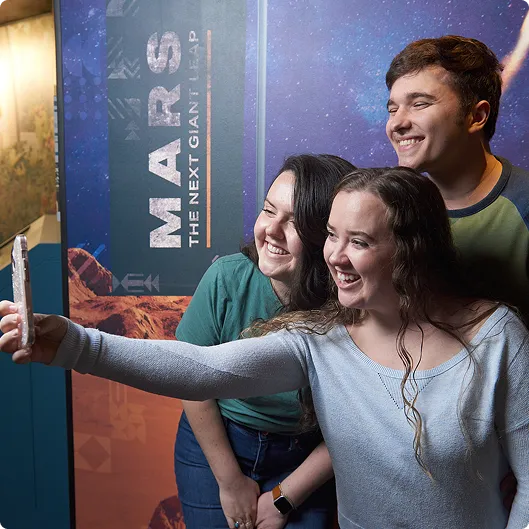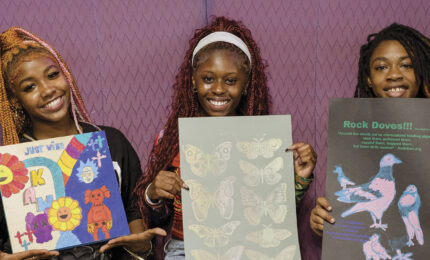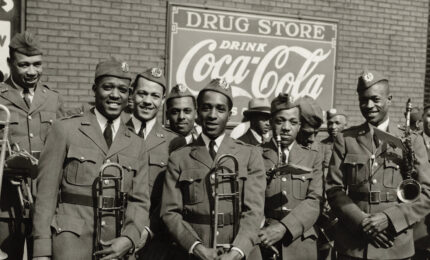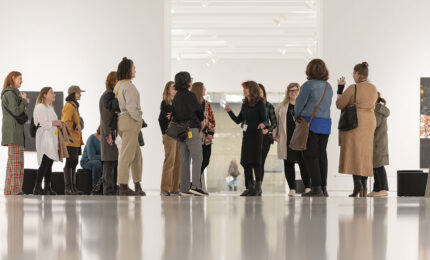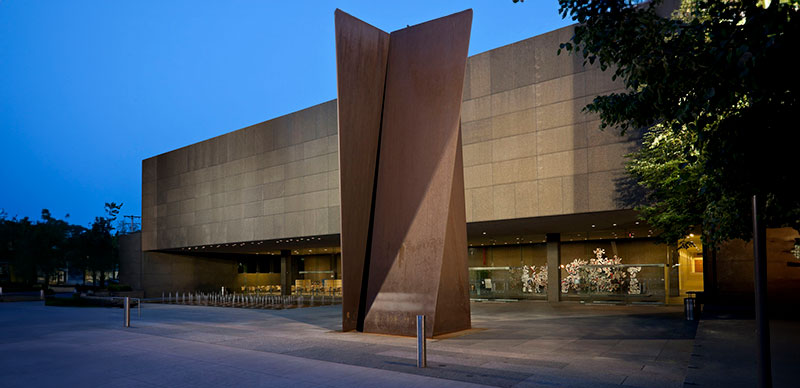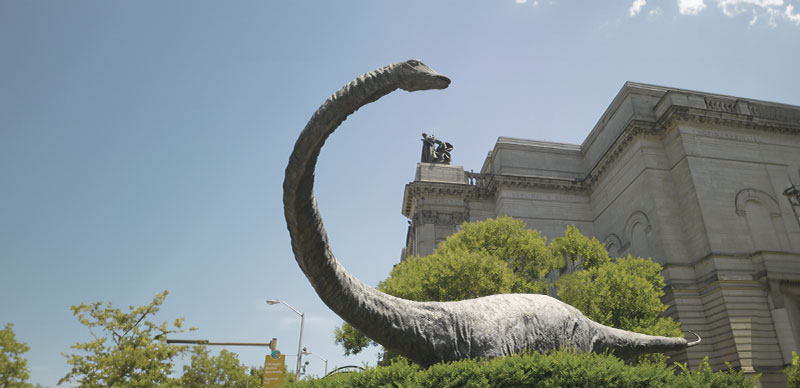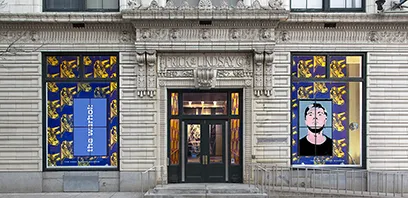Chicago painter Gertrude Abercrombie’s 1943 artwork The Stroll has a visual vocabulary that could act as a primer to her work. A woman dressed in a full-length black cloak and wearing a wide-brimmed hat walks along a flat path at night. Her only companion is a black cat, which accompanies her as they pass a crude Y-shaped tree beneath a full moon.
The hat, cat, and tree are recurring themes in her work. But when juxtaposed in The Stroll, the combination of the witchy and the ordinary produces a compelling piece of art that is both childlike and haunting.
The painting employs a simple-yet-strange visual language that the bohemian artist used to invite viewers to connect with her art.
“She called it the ‘point of contact’ and thought it was absolutely essential to art,” says Sarah Humphreville, Lunder Curator of American Art at Colby College Museum of Art in Maine. “It’s where the viewer meets the artist’s idea, emotion, or experience.”
Humphreville is co-curator of Gertrude Abercrombie: The Whole World Is a Mystery, an exhibition of dozens of Abercrombie’s paintings on view in Carnegie Museum of Art’s Scaife Gallery 1 through June 1. Each has its own point of contact, some employing rather surreal strategies.
“By working in this representational way—you understand what the discrete objects are even if you don’t know what they’re doing— she uses a really pared-down visual language,” Humphreville says. “But then she’s also using humor—there’s a giraffe sticking its head out of a building—or she’s making it spooky. It appeals to basic emotional instincts, and that brings people in.”
In 1948’s Where or When (Things Past), an intense woman stands in a sparsely furnished room and stares directly at the viewer. She holds a long string that leads from a cat sitting at her right to a cone-shaped object resembling a peaked hat on the opposite side of the room; one of Abercrombie’s own paintings of a dream-like white horse and dead tree hangs on the wall behind her. Echoing Humphreville’s assessment, everything in the painting makes perfect sense; but their positioning, their plainness, becomes something surreal.
In 1954’s The Queen, a woman with a crown and scepter has the long train of her turquoise dress held up by an owl. Is this plain, ordinary, empty room in the same house as 1966’s Horse, Owl and Chaise—a white horse, looking through a window at an owl perched above a similarly turquoise chaise lounge? None of these simple images attempt to fit together, they’re simply grouped in one frame.
“She was one of many artists dealing with living in challenging circumstances at that time. And to deal with it, she came up with this way of expressing the uncanny of the everyday.”
–Cynthia Stucki, curatorial assistant, Carnegie Museum of Art
Taking everyday objects and inserting them into a fantastical world was not merely an artistic choice, but also how Abercrombie made sense of a chaotic world in the grip of global war and economic depression, says Cynthia Stucki, curatorial assistant at Carnegie Museum of Art.
“She was one of many artists dealing with living in challenging circumstances at that time,” says Stucki, who worked on the exhibition with co-curator Eric Crosby, Henry J. Heinz II Director of the Museum of Art. “And to deal with it, she came up with this way of expressing the uncanny of the everyday.”
Abercrombie’s entire life was one of constant upheaval and adaptation. She was born in 1909 to traveling opera singers, and spent the first seven years of her life traveling around America and Germany before the advent of World War I meant leaving Europe and returning to Chicago—a city with which she would be forever associated.
Abercrombie was like a Zelig of 20th-century Chicago: She trained as a commercial artist and began her career making department store ads and catalogs before joining the Works Progress Administration—President Roosevelt’s agency for renewing America through infrastructure, education, and the arts in the wake of the Great Depression. Later on, she would be known as “Queen of the Bohemian Artists” and become a fixture of the jazz scene in Chicago, befriending icons from Dizzy Gillespie to Charlie Parker.
It’s a fascinating biography. But Humphreville and Stucki hope the exhibition brings more attention to Abercrombie’s art, and her standing as one of the great painters of a modernist American era in which a woman from Chicago was always going to be overshadowed by men from New York City.
“Because she had such an interesting life, that biography has oftentimes overtaken the art,” says Humphreville. “Part of the mission of the show has really been to say, these are amazing artworks in and of themselves, even if you don’t know anything about her.”
Major support for the exhibition has been provided by Carnegie Museum of Art’s Virginia Kaufman Fund and James H. and Idamae B. Rich Exhibition Endowment Fund. Additional support for the exhibition has been provided by Nancy and Woody Ostrow, Valerie Carberry and Richard Wright, the Robot Family Foundation, Schoelkopf Gallery, and Waqas Wajahat. Carnegie Museum of Art’s exhibition program is supported by the Carnegie Museum of Art Exhibition Fund and The Fellows of Carnegie Museum of Art.
